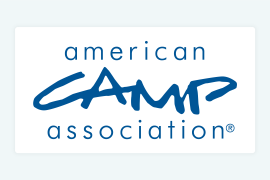The federal relief bill passed in December includes an option for financial relief for businesses in addition to the Paycheck Protection Program (PPP) that is only now beginning to get noticed. The Employee Retention Tax Credit (ERTC) program may now be another option for additional financial relief for many camps. As this program provides payroll tax credits, nonprofits can also take advantage of this program.
The CARES Act created a new program to help employers keep staff on their payroll called the ERTC. Because the CARES Act required a business to choose either the PPP or the ERTC program, but not both, almost no one used the ERTC program. The most recent relief bill changed that limitation so that businesses who participate in the PPP can now also participate in the ERTC program. In fact, the bill allows for businesses to apply for the tax credit in 2020 as well as in 2021.
2020 Credit Details
The 2020 ERTC allows businesses to apply for a refund of certain employment taxes equal to 50 percent of the qualified wages an eligible employer paid to employees after March 12, 2020, and before January 1, 2021. Wages up to $10,000 per employee may be counted to determine the 50 percent refund, resulting in a maximum refund of $5,000 per employee. It is important to note that wages counted toward the forgivable amount of a PPP loan cannot also be used for an ERTC.
There are two methods of qualifying for the ERTC. The first is triggered by a full or partial suspension of the operation of a business during any calendar quarter because of governmental orders limiting commerce, travel, or group meetings due to COVID-19. The second method of qualification requires a demonstration of a reduction in gross receipts in 2020 as compared to the same period in 2020.
The gross receipts method, in many cases, is less complicated to demonstrate than the suspension of operations and will be the better method for many camps. A camp will need to demonstrate a 50-percent reduction in gross receipts in any single quarter of 2020 as compared to 2019 to qualify. If the following quarter shows a decrease in gross receipts of only 20 percent as compared to 2019, it can be used as well.
2021 Credit Details
The new legislation increases the benefits and decreases the qualifications requirements for the program in 2021. Businesses must be able to demonstrate a 20-percent reduction in gross receipts in the first quarter of 2021 as compared to 2019 to qualify for the program. If a business meets that threshold, a refundable tax credit can be requested of up to 70 percent of the qualified wages of an eligible employee, up to $10,000. As such, a business may receive up to $7,000 per employee in that quarter.
Unlike the 2020 program, the updated program can be applied again in the second quarter of 2021 if the business can demonstrate a 20-percent reduction in revenue of that quarter as compared to 2019. As such, a business could receive a credit of up to $14,000 per employee in the first six months of 2021.
ERTC and PPP
As mentioned earlier, funds used to qualify for forgiveness of a PPP loan cannot also be used for the ERTC. That said, if an employer has excess payroll costs in 2020 above the amount used for forgiveness for a PPP loan, the ERTC will provide additional financial relief.
Camps should work with their tax advisor and lending institution to determine the method for structuring their PPP forgiveness application in a way that maximizes the amount of relief provided by the ERTC, as the formulas can be complicated. Maximizing non-payroll expenses that qualify for forgiveness under the PPP allows a camp to also maximize the benefit from the ERTC. Here are good examples of how the two programs can be structured to maximize relief (thank you to Andrew Ziv for sharing these examples).
Important Considerations
Businesses have either two or three years (depending on several factors) to request the tax credit provided by the ERTC. As such, it may be worth focusing on the 2021 ERTC first, as the potential credits are up to $14,000 per employee as opposed to $5,000 per employee in 2020.
If a camp has already been granted forgiveness for the initial PPP, they will not be able to go back and modify the qualifying expenses used. However, if a camp has applied for forgiveness and not received it yet, they may be able to request the suspension of the forgiveness application. Contact your lending institution to find out if that option is available.
There is a strong expectation that the Biden administration will continue to adjust both the PPP and the ERTC program to allow for the maximum benefits to be received by impacted businesses. These adjustments may include simplifying the methods for applying for PPP forgiveness or increase the non-payroll qualifying expense. Delaying an application for PPP forgiveness until it is required will allow camps to continue to take advantage of additional modifications to the program. There is some expectation that the ERTC may be extended beyond the second quarter of 2021 as well.
ACA will continue to monitor these and other relief programs and will provide additional details as they become available. In addition, we will continue to update our Relief Bill Question & Answer resource, which has more detail about the various financial relief programs currently available.




